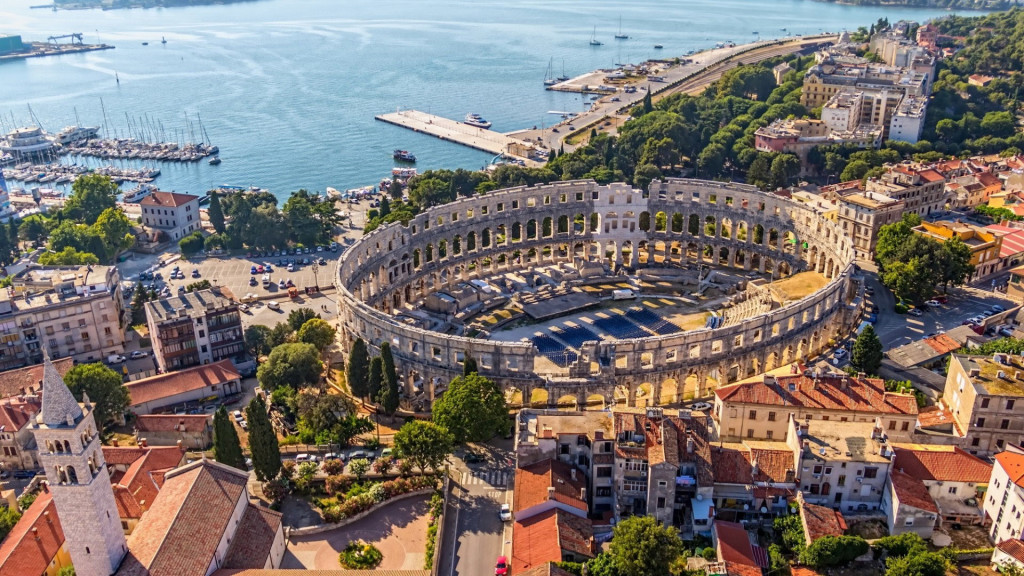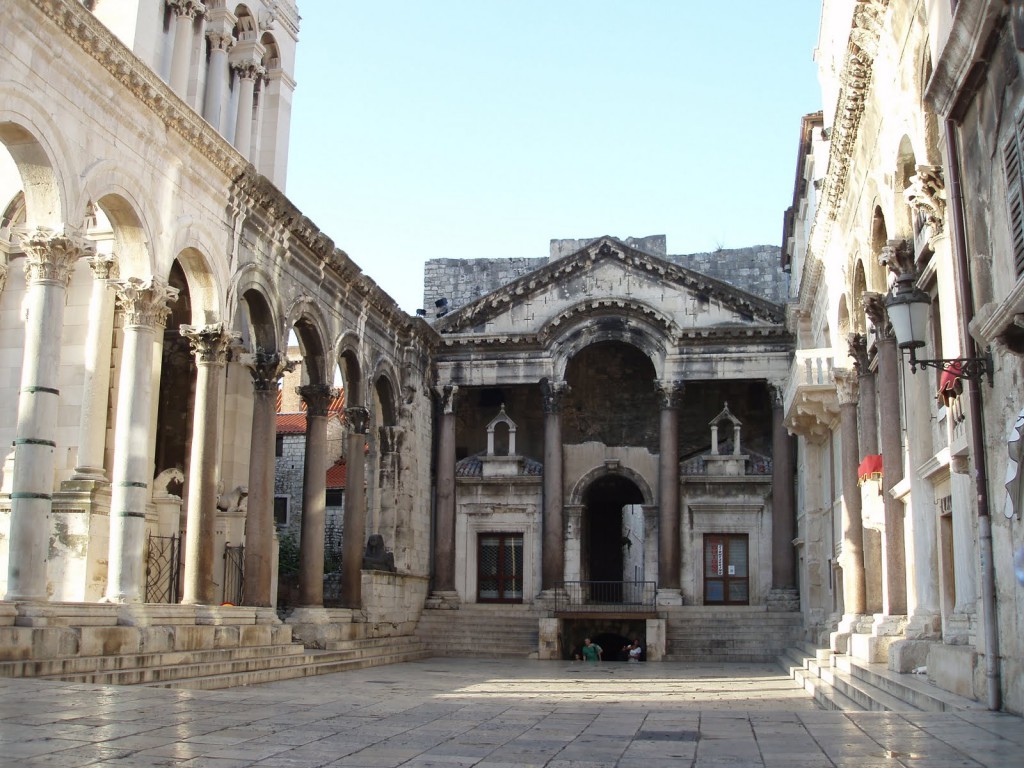
Split er det økonomiske og administrative senteret i Midt Dalmatia, med omkring 200.000 innbyggereis the economic and administrative center of Middle Dalmatia, with about 200,000 inhabitants.
Det er også et hopp-off punkt for utforskning av kysten og øyene i Adrianerhavskysten. Stedet ble først bosatt når den Romerske Keiseren Diocletian bygde palasset sitt her, i slutten av det tredje århundre.It is also the jumping-off point for exploration of the coast and islands of the beautiful Croatian Adriatic. The site was first settled when, at the end of the third century AD, the Roman Emperor Diocletian built his palace here.
The Viktigheten avimportance of Diocletian’s Palace palass går langt forbi lokal viktighet siden de er preservert såpass godt, og fordi bygningene har suksessfult samlet historiske perioder innenfor veggene, som i dag skaper selve hjerte i Split. Splits styrke økte betydelig i det 7. århundre, når innbyggerne ødela den greske og romerske byen Salonae (dagens Solin) tok tilflukt innenfor veggene. De vakre ruinene i Solin ved utsiden av byen kan fortsatt utforskes i dag. I Middelalderen var Split en enorm kommune.far transcends local significance because of its level of preservation and the buildings of succeeding historical periods built within its walls, which today form the very heart of old Split. Split’s growth became particularly rapid in the 7th century, when the inhabitants of the destroyed Greek and Roman metropolis Salonae (present-day Solin) took refuge within its walls. The lovely ruins of Solin outside the city can still be explored today. In the Middle Ages, Split was an autonomous commune.
Mange av Splits historiske og kulturelle bygninger kan man finne innenfor veggene av Siocletians palass. I tillegg er det flere museum, national teateret, en gammel kirke og andre arkeologiske plasser i Split gjør det til en viktig kulturell attraksjon. Split er en travel havn, med en internasjonal flyplass og regelmessig ferjeturer til de nærliggende øyene, i nord og sør Adrianerhavet, Italia og Hellas. Handelsskipene og passasjerskipene fra havnegården i Split kan gjennkjennes i nesten alle verdenshav. I tillegg har byen store kjemiske arbeid, metallarbeid, og arbeidsstasjoner for produksjonen av solceller. Den fruktbare jorden rundt Split gir en god base for jordbruk, mens kulturelle monumenter, fantastiske landskap og et enestående landskap gjør Split til et eventyrland for enhver turist. Split er også et universitet og er vertsskap for flere forskningsinstutisjoner.Many of Split’s historical and cultural buildings can be found within the walls of Diocletian’s Palace. In addition, numerous museums, the National Theatre, and old churches and other archeological sites in the Split region make it an important cultural attraction.Split is a busy port, with an international airport and regular ferry services with the nearby islands, the north and south Adriatic, Italy and Greece.
The merchant and passenger ships of the Split shipyards may be encountered in almost all the seas of the world. In addition, the city has large chemical works, metallurgy plants, and workshops for the production of solar cells. The fertile fields around Split represent a good base for agriculture, while cultural monuments, superb landscapes and unparalleled seascapes make it a tourist’s wonderland. Split is also a university seat and host to numerous scientific institutions.


